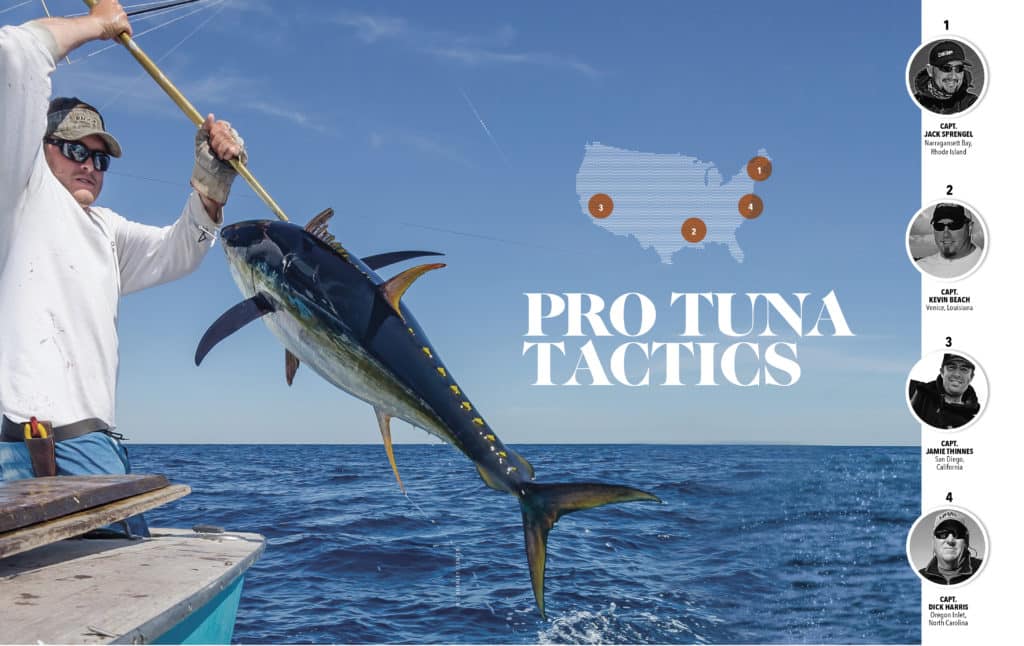
The right combination of tuna fishing gear and tactics means more tuna in the fish box.
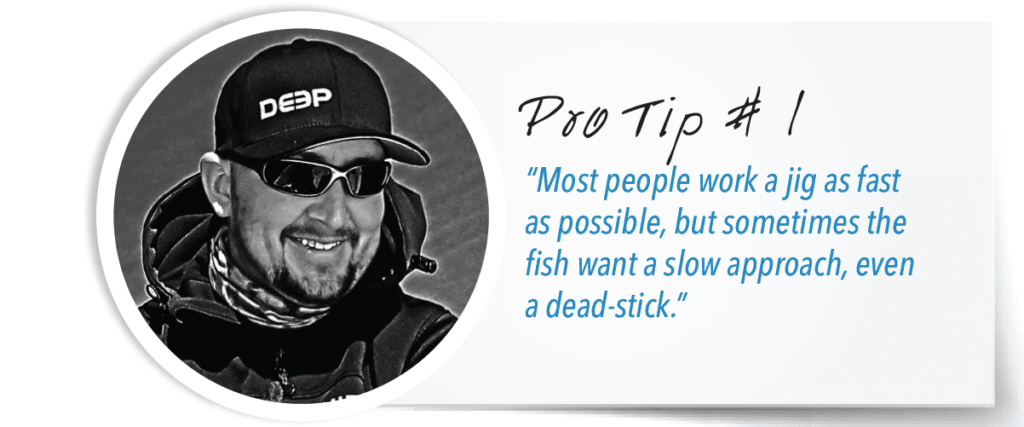
From his home base in Narragansett Bay, Rhode Island, Capt. Jack Sprengel at East Coast Charters (eastcoastchartersri.com) targets tuna from early summer to late fall. Inshore, he chases bluefins with topwater lures and soft-plastic jigs. Offshore, the best action is in the canyons and along deepwater drops. “I head for the northwest corner of a warm-water eddy that crosses some type of underwater structure,” Sprengel explains. “Even a 2-degree temperature difference can hold fish.” He also likes clear water and looks for low chlorophyll counts on satellite images.
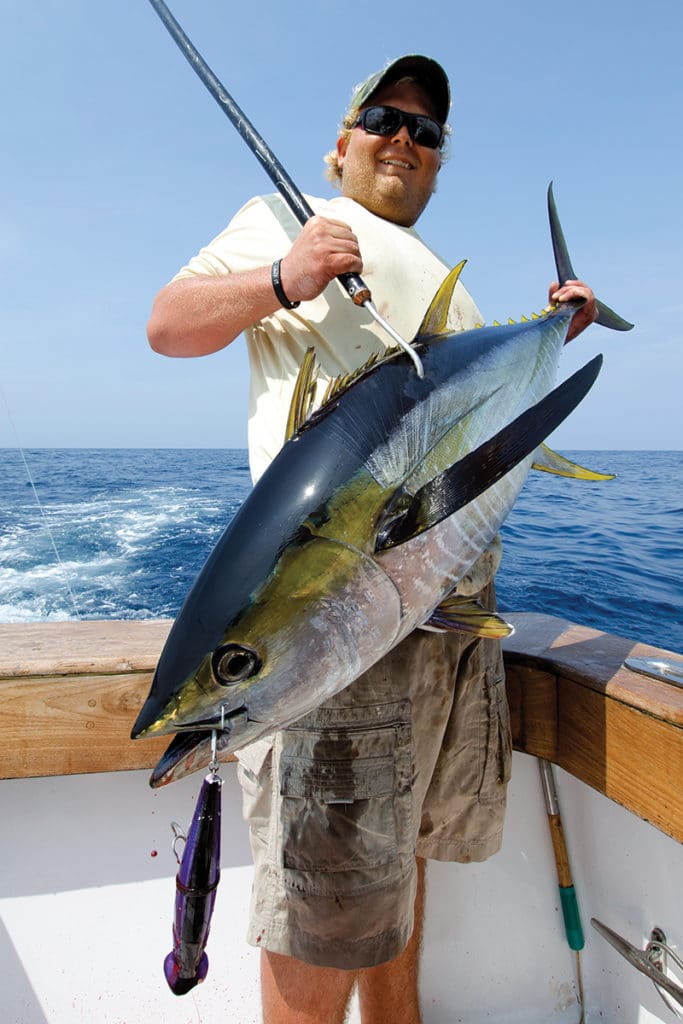
Rhode Island
In late summer, Sprengel turns his attention to the night bite. He trolls spreader bars, swimming plugs and skirted baits until an hour after sunset. Once night falls, Sprengel puts out the Hydro Glow light and bait rigs. He stresses thawing butterfish completely. He drifts three baits, one just inside the light, one halfway between the light and the thermocline, and another at the thermocline. Sprengel also jigs with vertical jigs and soft plastics. He’ll drift all night, then turn to trolling from an hour before dawn until late morning. “I’ve fished without a bite for eight hours for two hours of action,” Sprengel claims. “The key is to have your act together, fish where the life is, and be ready for anything.”
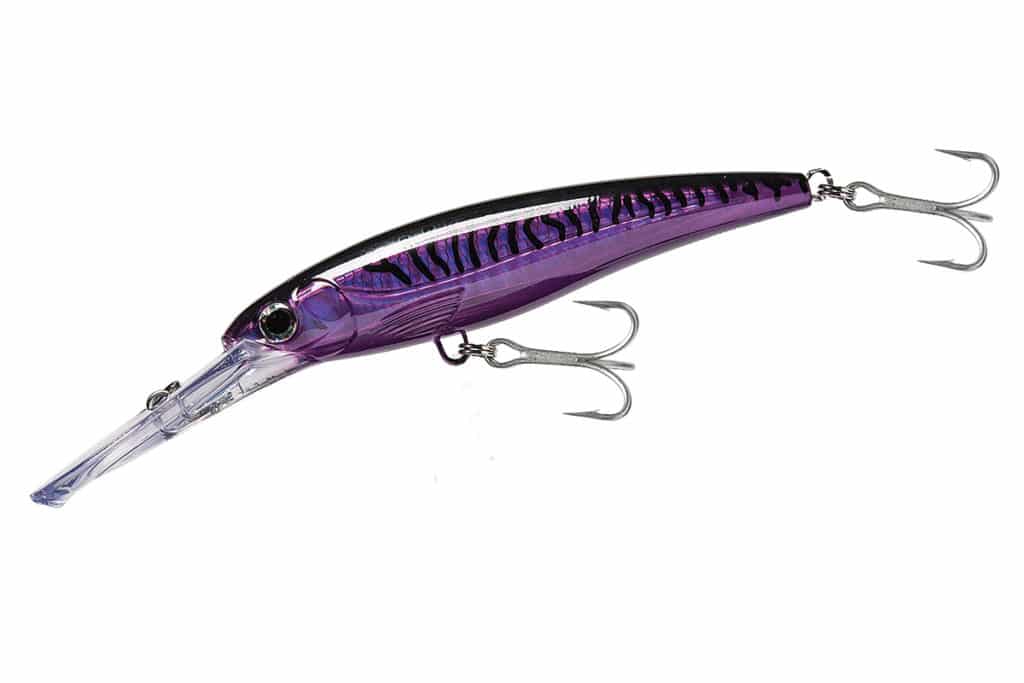
Capt. Sprengel’s Tackle Box: Rapala X-Rap Magnum 30 Troll a diving lure behind a spreader-bar teaser.
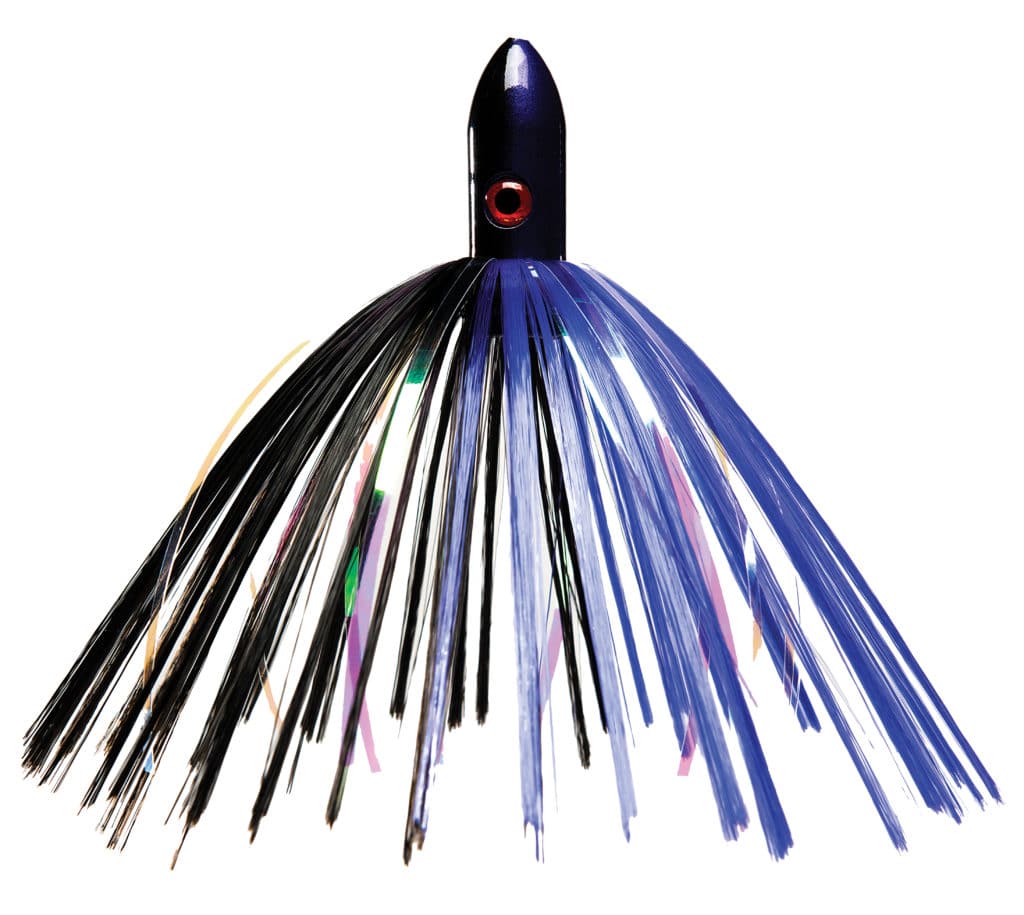
Capt Sprengel’s Tackle Box: Joe Shute Bluefin series, another effective option to pull 30 feet behind a spreader bar.
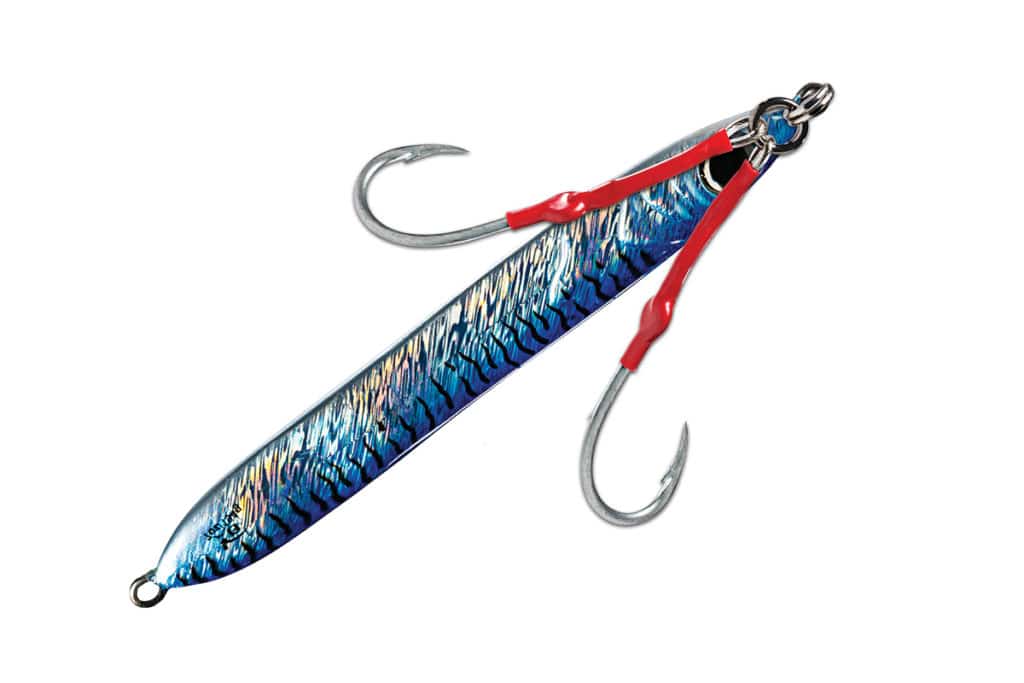
Capt. Sprengel’s Tackle Box: Flutter jig, while drifting and chunking at night, drop a jig deep, to the thermocline. Vary the retrieve from normal speed to a simple dead-stick activated by the motion of the boat.
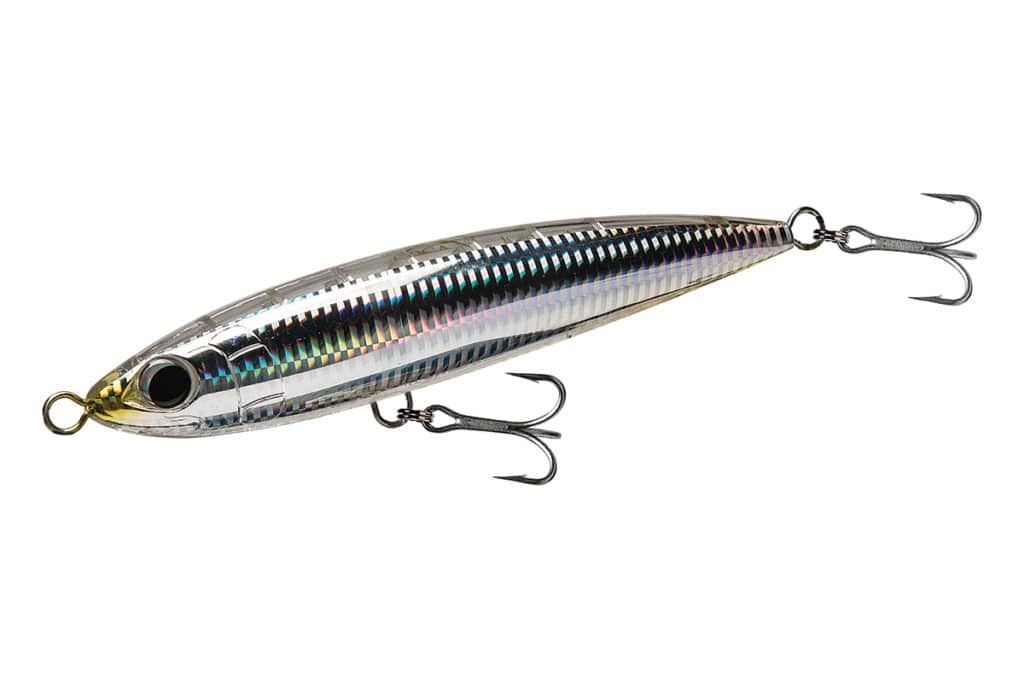
Capt. Sprengel’s Tackle Box: Shimano Orca, cast topwaters when fish are hitting on the surface.
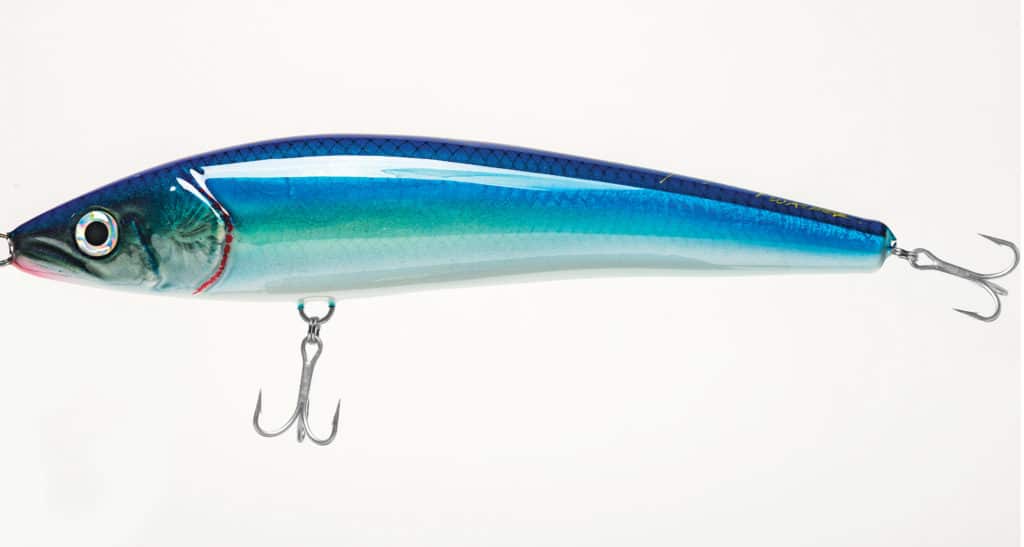
Capt. Sprengel’s Tackle Box: Strategic Angler topwater lures
West Coast Lessons
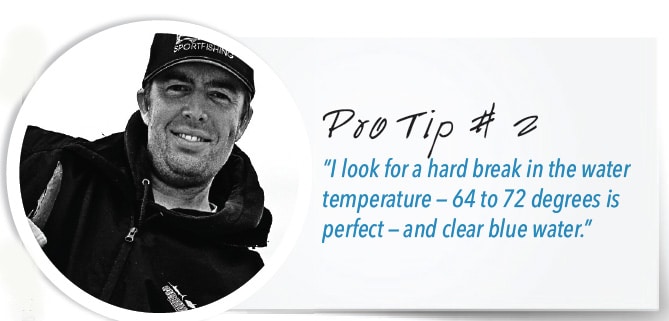
Capt. Jamie Thinnes of seasonssportfishing.com claims tuna fishing is good and getting better off San Diego. “We’re seeing more fish — and bigger ones, too,” he says. Tuna season begins in early summer with the arrival of albacore, followed by yellowfins midsummer and bluefins as the season heats up, with early fall the hottest time of year. Thinnes starts the day with the satellite image of water temperature and chlorophyll count. Once he’s in the zone, Thinnes trolls tuna feathers and cedar plugs while searching for diving terns and kelp paddies. He runs a cedar plug down the center in the clear water behind the boat wake. Tuna feathers take up the short riggers, and he runs a small jet-head lure on one flat line and a Rapala X-Rap Magnum 30 on the other. To crack open the bite from lockjaw tuna, he’ll add a 12-bait spreader bar to the mix.
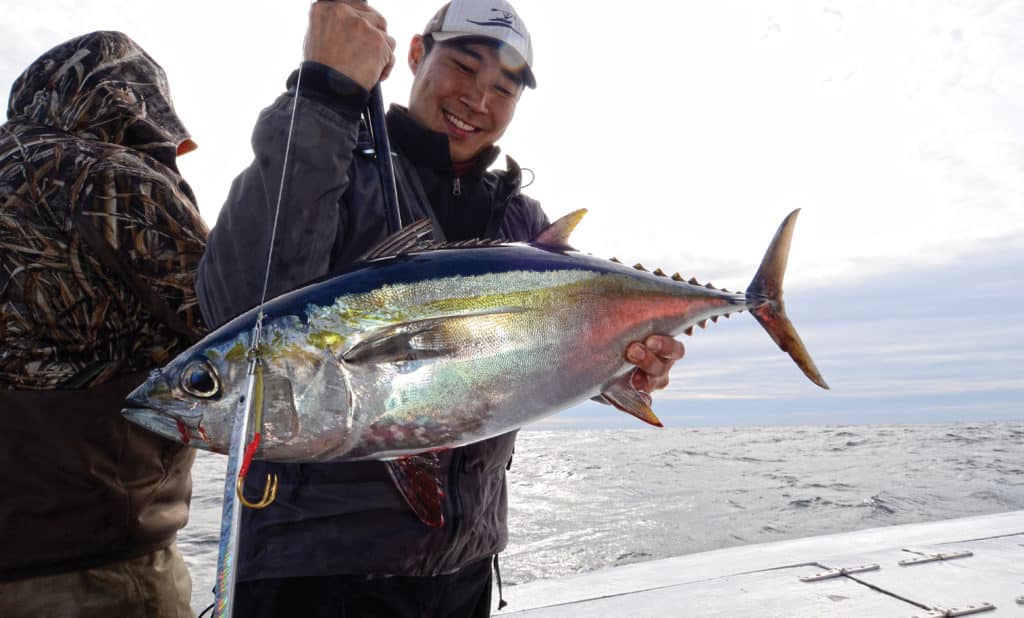
When he finds floating kelp, he sets out live baits on light tackle and drifts quietly past the paddy. “I start my first drift to pass 100 yards from the paddy,” he says, “then make my next drift so I go a little closer.” Thinnes says live bait is the “it” factor for SoCal tuna, and he is careful how he transfers it. “Ask the guy at the bait receiver to only put two or three baits in the net at a time, and dip baits off the top of the tank when you’re fishing.” Thinnes laughs when he sees boats blasting through rough seas with a tank full of bait. “That beats up the baits,” he explains. “You have to treat your bait like family.”
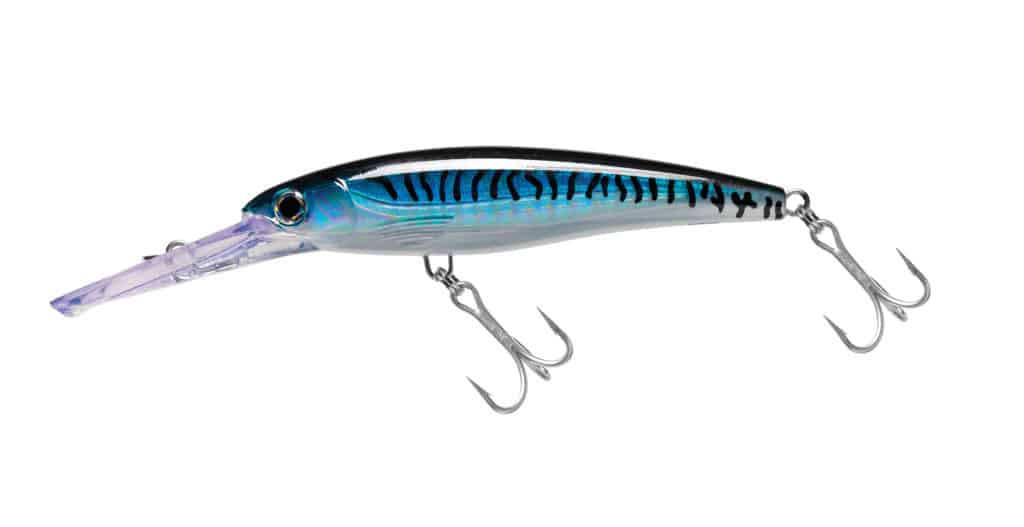
Capt. Thinnes Pro Tackle Box: Rapala X-Rap Magnum 30, add a lipped plug to the trolling spread, on a flat line off one transom corner.
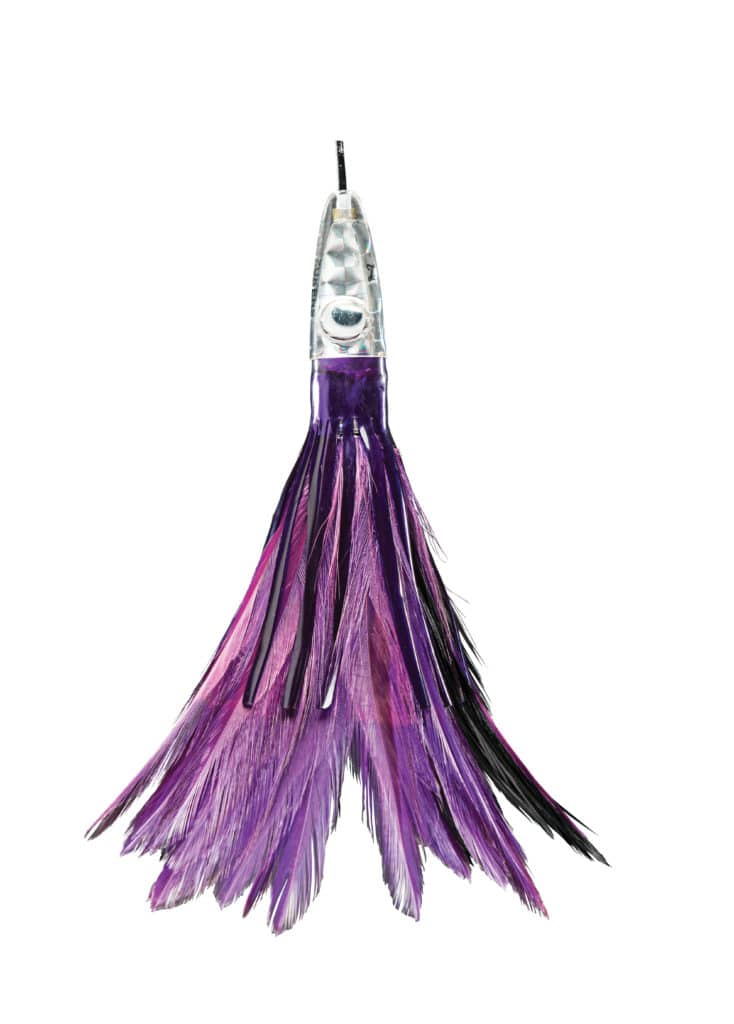
Capt. Thinnes Pro Tackle Box: Zuker Tuna Feather, pull a tuna feather from one of the transom flat line.
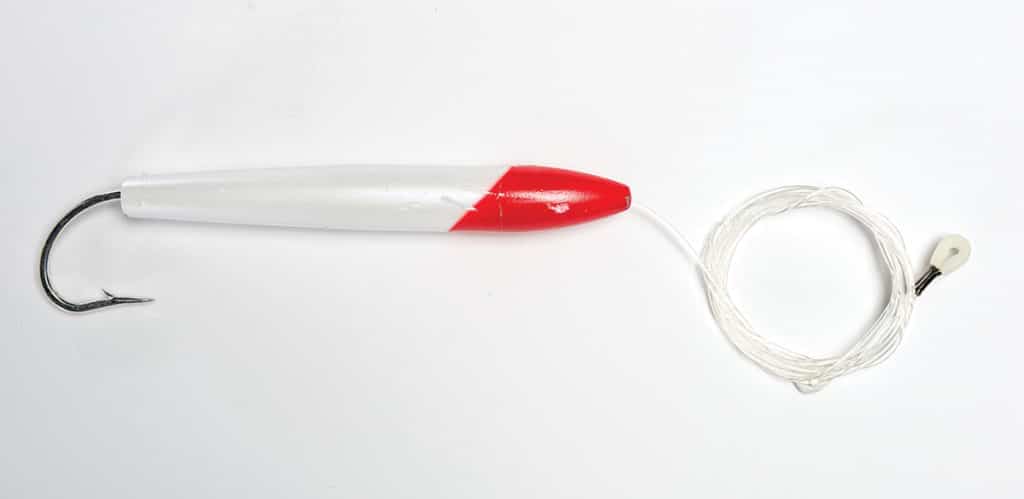
Capt. Thinnes Pro Tackle Box: Cedar Plug, drop a cedar plug back in the middle of the spread, in the clear water behind the wake.
Gulf of Mexico
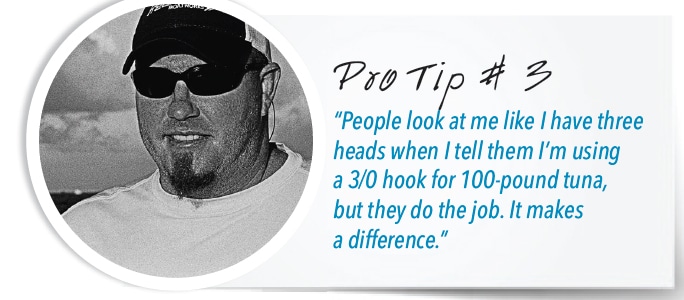
Tuna season never ends off Venice, Louisiana, so Capt. Kevin Beach stays busy all year. To find tuna, he first looks at the satellite temperature shot. “I look for 68 degree water. That’s their happy place,” Beach says. When he stumbles across a grass line or trap float, he uses a sabiki rig to load up on mackerel and speedos. “I have a different style and size sabiki for different types of bait,” Beach says. “I call it sabiki fruitcake.” When Beach hooks one tuna, he casts another livey clear of the hooked fish and into the nearby school. “That’s how we turn a single into a double or triple hookup,” he says. Tuna come in many sizes off Venice, and Beach believes hook choice is critical. “You can get away with a 7/0 Mustad 39950BLN circle hook on most baits,” he says, “but in the summer, we use smaller mackerel and speedos for bait, so I switch to a Mustad R10827NP 3/0 hook with a ringed eye.”
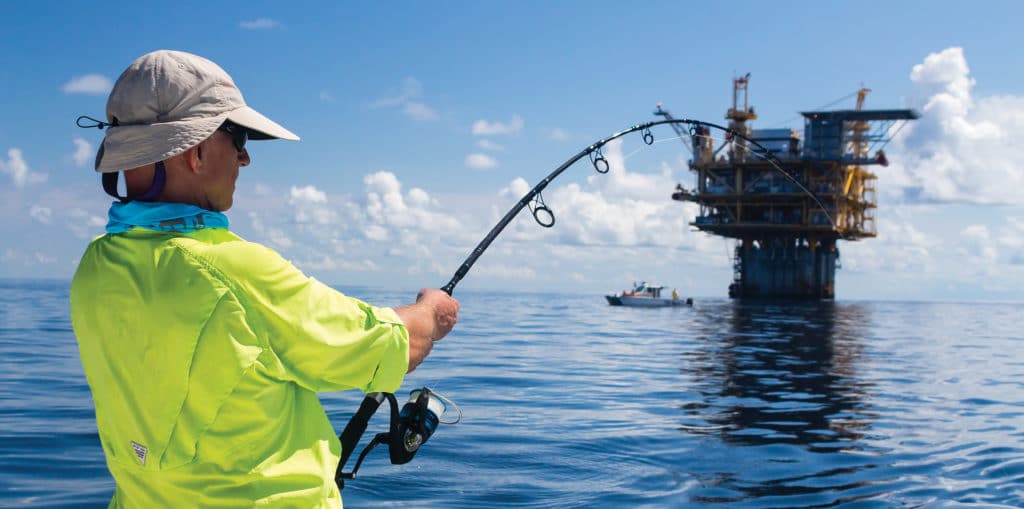
Capt. Beach’s Pro Tackle Box: For large tuna, 50-pound-class stand-up rod, matching two-speed reel, 130-pound hollow-core backing, 80-pound top shot, 130- to 170-pound wind-on fluoro leader, and 7/0 Mustad 39950BLN to 3/0 Mustad R10827NP-BN hooks.
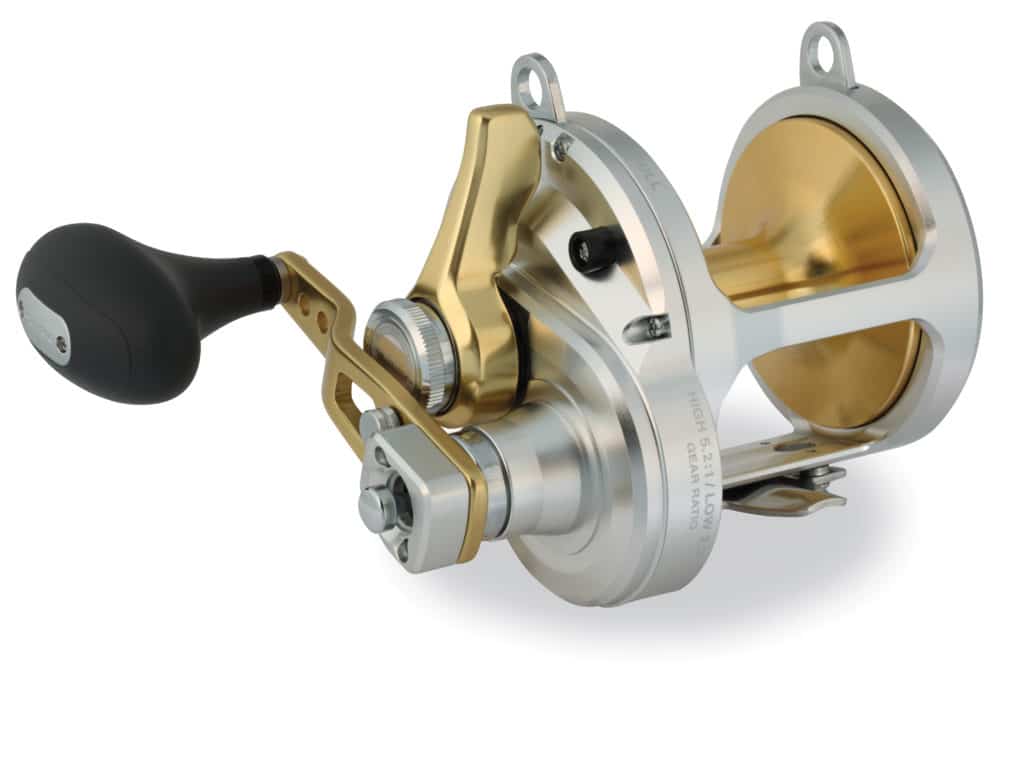
Capt. Beach’s Pro Tackle Box: For small tuna, 6½-foot medium-heavy, stand-up rod and 25-pound-class, two-speed reel spooled with 80-pound hollow-core braid and 50 to 100 feet of 60- to 80-pound leader.
Mid-Atlantic Mayhem
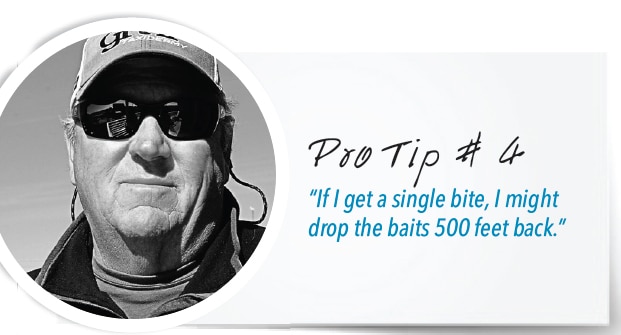
On a good day, crews leaving Oregon Inlet, North Carolina, fill a two-fish-per-angler limit of yellowfins and return to the dock before lunch. “Then there’s the ‘other’ days,” says Capt. Dick Harris on Fintastic. When the tuna just won’t cooperate, he takes his game to the next level. Harris says running the humps and canyons where the edge of the Gulf Stream crosses the 100 fathom drop can be a good game plan. But if the fish aren’t home, he searches along the 100 fathom edge, zigzagging offshore and inshore.
Once Harris finds fish, he pays close attention to his direction and speed when he gets a bite. “Many small boaters troll too slowly,” he points out, suggesting a speed around 7 or even 8 knots. “If I get a single bite, I might drop the baits 500 feet back,” he adds. “If they hit me all at once, I’ll tighten up the spread.”
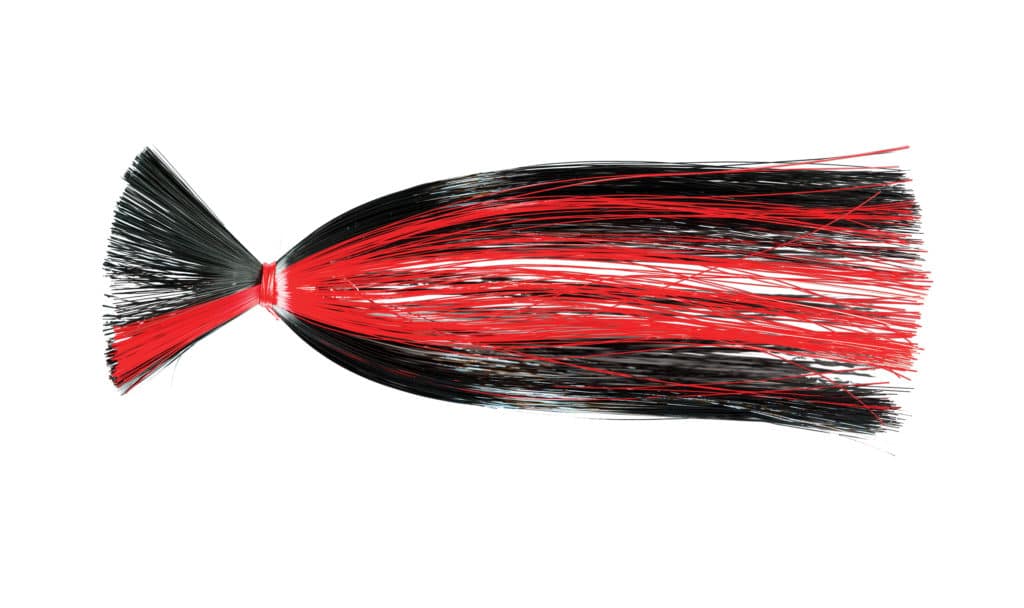
Capt. Harris’ Pro Tackle Box: Sea Witch skirts rigged over a ballyhoo on a 9/0 hook offer a classic trolling presentation for mid-Atlantic tuna. Harris’ yellowfin spread consists of eight to 10 skirted ballyhoo. To catch sharp-sighted tuna, Harris makes sure his baits are perfect. He switches out ballyhoo as soon as they lose scales or loosen on the hook. He also demands perfection in his skirts. “Make sure the hair isn’t bunched up or too thick,” he says. Harris insists that a skirt works best on its second or third day in the spread. “Maybe it absorbs the scent,” he says, “but a fresh skirt won’t get as many bites.” If the fish still won’t respond, he’ll replace the rubber band with Monel wire and paint the hooks black or red.









